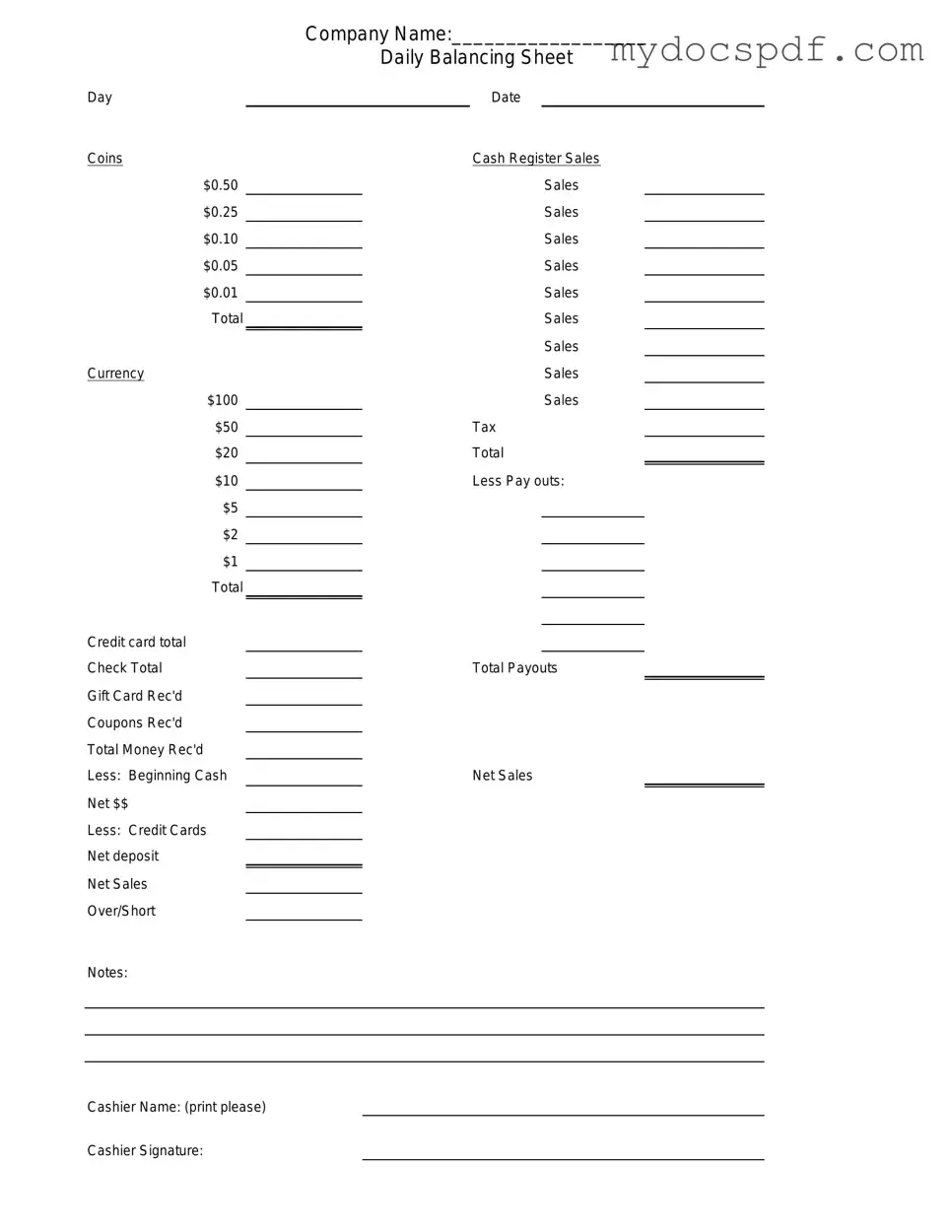Get Cash Drawer Count Sheet Form in PDF
The Cash Drawer Count Sheet is a document used to record the cash balance in a register at the beginning and end of a business day. This form helps ensure accurate tracking of cash transactions and assists in identifying discrepancies. By maintaining detailed records, businesses can enhance their financial accountability and streamline their cash management processes.
Access Editor Here

